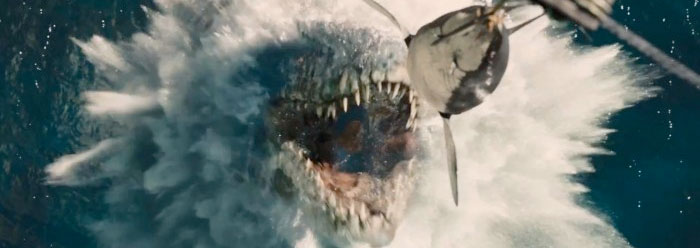New science directly challenges the millions-of-years dogma scattered throughout the blockbuster movie Jurassic World. The spring 2015 edition of the Creation Research Society Quarterly (CRSQ) is a special issue that focuses on the investigation of dinosaur proteins inside fossil bones. The last article in the issue presents never-before-seen carbon dates for 14 different fossils, including dinosaurs. Because radiocarbon decays relatively quickly, fossils that are even 100,000 years old should have virtually no radiocarbon left in them.1 But they do.
Jurassic World characters repeatedly mention "million years ago" in the context of their dinosaurs. In the movie, fictional scientists essentially resurrect and genetically redesign dinosaurs, pterosaurs, and even a giant mosasaur—creatures supposedly extinct for 65-75 million years.
The CRSQ study authors tested seven dinosaur bones, including a Triceratops from Montana, hadrosaurids, a cartilaginous paddlefish, a bony fish, and fresh-looking wood and lizard bones from Permian layers in Canada and Oklahoma. Five different commercial and academic laboratories detected carbon-14 in all the samples, whether from Cenozoic, Mesozoic, or Paleozoic source rocks. How did that radiocarbon get there?
The team also compared the results to several dozen published carbon-14 results for fossils, wood, and coal from all over the world and throughout the geologic column. Comparable amounts of radiocarbon showed up in almost 50 total samples.2
Defenders of evolutionary time scales will have to assert that the radiocarbon all came from some sort of contamination, where recent or modern carbon somehow crept into all these samples. This has been argued before, but the testing process itself is loaded with procedures that rigorously remove contaminants.
Secular researchers routinely detect radiocarbon in carbon-containing materials like coal, oil, marble, and diamond—materials they would like to use as "carbon dead" standards. If contamination is really to blame for these results, then why does it appear in such supposedly old material as well as in every single fossil in the CRSQ report? Broad-brushed claims of contamination weaken with every new documented carbon date from really old material.
Jurassic World delivers good entertainment as long as viewers overlook its bad science. Real-world experiments counter the feasibility of performing impossible "de-extinction" procedures and repeated assertions of "millions of years."
References
- Thomas, B. and V. Nelson. 2015. Radiocarbon in Dinosaur and Other Fossils. Creation Research Society Quarterly. 51(4): 299-311.
- Every one of the 14 specimens had Radiocarbon Years BP (Before Present) of between 17,850 and 49,470, corresponding to evolutionary age assignments of 10 million and 280 million years, respectively. Radiocarbon years do not correspond to calendar years because of past changes in the rate of carbon-14 formation and carbon content.
Image credit: Copyright © 2015 Jurassic World Universe. Adapted for use in accordance with federal copyright (fair use doctrine) law. Usage by ICR does not imply endorsement of copyright holders.
*Mr. Thomas is Science Writer at the Institute for Creation Research.
Article posted on July 6, 2015.














